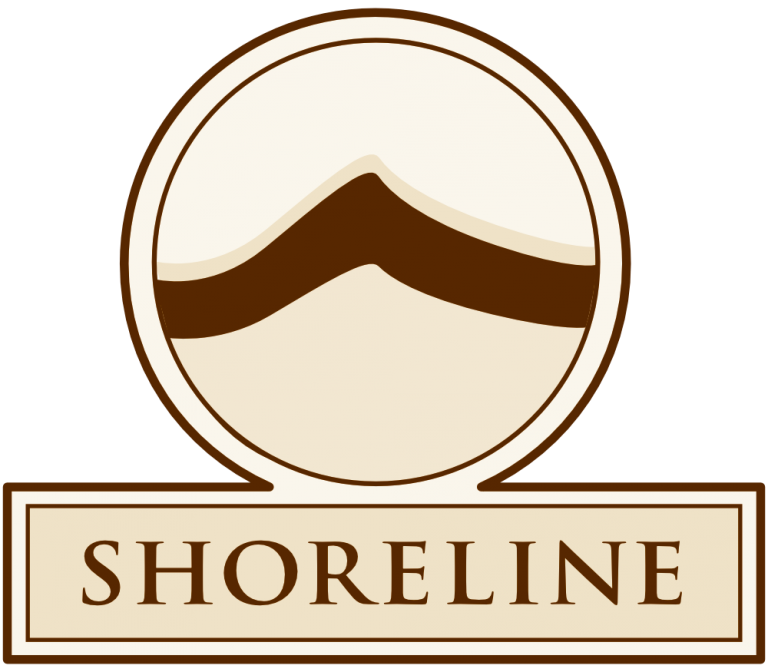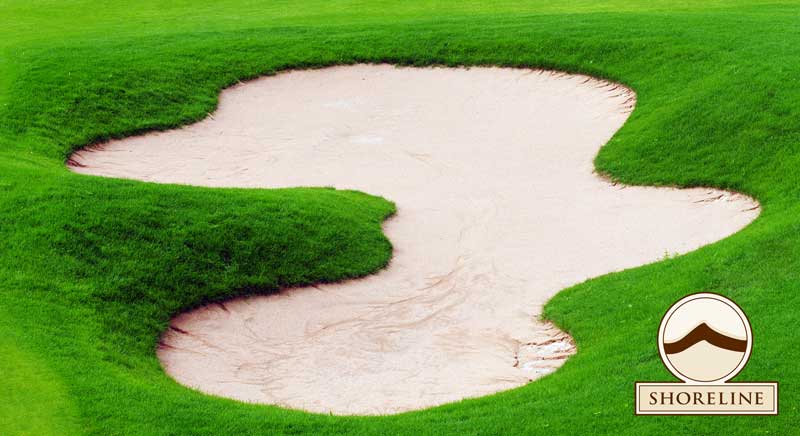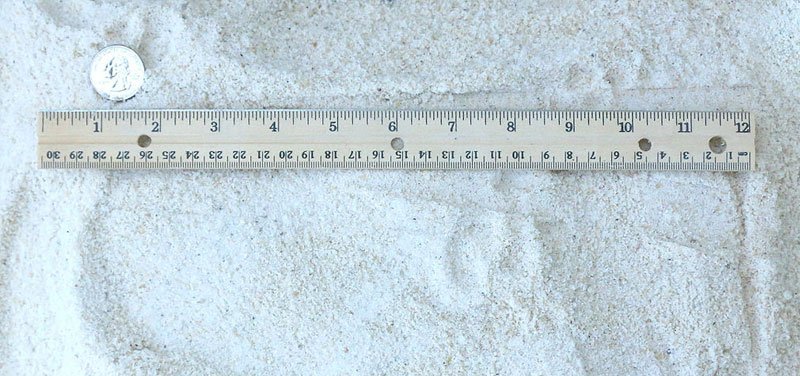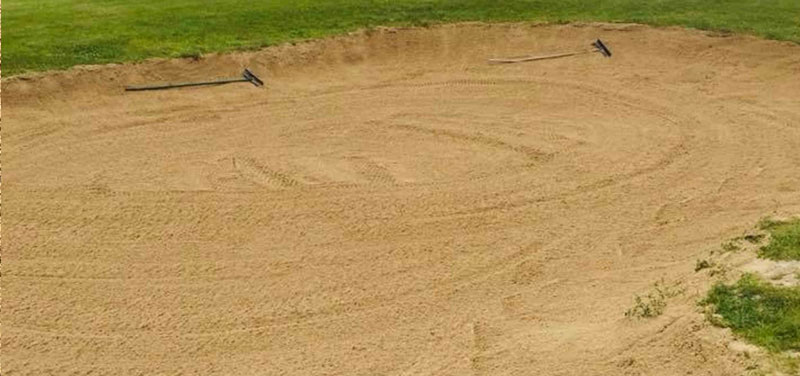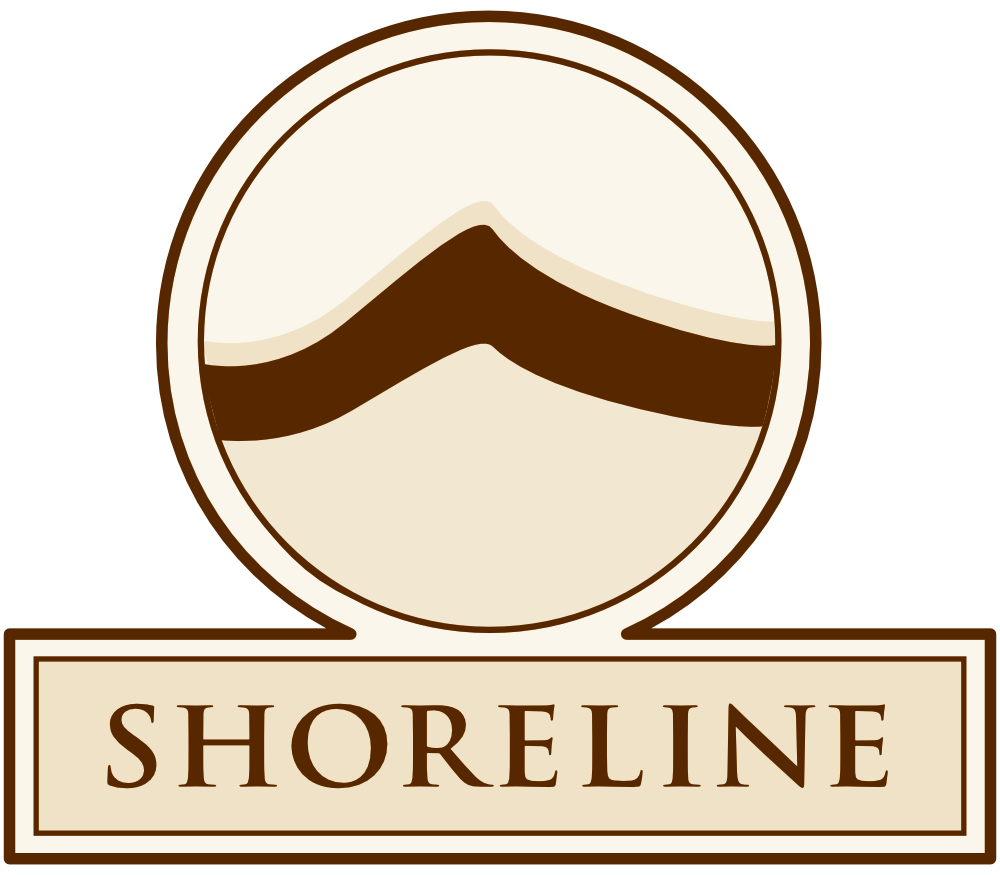Golf course sand bunkers are designed to test a golfer’s skill and are a strategic part of the game of golf. As such, sand bunkers are a top concern for golf course superintendents – both in form, and function. When designing and caring for your course, sand quality, appearance and playability of your sand bunkers matter. So, how do you determine the best sand for your sand bunkers?
Knowing how to select a bunker sand that is best for your course-specific conditions is critical to creating quality playing conditions and maximizing the longevity of your sand bunkers. The two properties of bunker sand the United States Golf Association believes most influence performance are particle size distribution and sand shape. They found the best performing bunker sands contain mostly 0.25- to 1.0-millimeter particles and has an angular shape. Anything finer can impede drainage and create sand that is too soft, wet, or inconsistent, and other shapes do not compact as well.
Other factors to consider include drainage, cost, vulnerability to wind and water erosion, crusting potential, chemical stability and color/appearance. All these characteristics will influence the quality of the golf experience and should be key considerations in selecting sand for your golf course bunkers. Depending on location and climate, how these factors are ranked vary slightly.
Sand selection guidelines for common golf course conditions
1. Selecting bunker sand for heavy-rain climates
When selecting bunker sands for a wet climate, the trick is to find that perfect balance of a sand with a high enough permeation rate to withstand heavy rain events and can also remain firm enough to that inbound golf balls are able to bounce from the bunker. In climates with typical heavy rain, the USGA recommends using a sand that has a Cu (uniformity coefficient) in the lower range – i.e., a value from 2-3 – and contains coarse sand in the higher end of the desirable range – 10 to-15 percent of the total mix between 1 and 2 mm – should perform well. Additionally, the silt and clay must be kept to a minimum, ideally less than 2 percent and the very fine sand content – between 0.05 and 0.1 mm and measured on the No. 270 sieve – must be less than 5 percent.
2. Sand selection for steep, flashed bunker faces
Sands that are widely graded, (with a high Cu) and angular and rough will have greater potential to remain on steep bunker faces. The angle of repose for a given sand provides a general guideline for the “do-not-exceed” slope for the bunker faces. The range of angle of repose for bunker sands is narrow, from as low as 29 degrees to as high as about 35 degrees. In addition to selecting a sand with a relatively high angle of repose, courses can use bunker liners to discourage erosion from steep slopes.
3. Sand selection for high-wind areas
Wind erosion can result in significant sand loss from bunkers, which increases costs due to sand replacement and the labor necessary to install the sand. The sand particles in the finer fraction – i.e., less than 0.25 mm in diameter – are more prone to wind erosion. At windy sites, the USGA recommends more than 80% of the bunker sand should be between 0.25 and 1 mm and 10%-20% should fall in the coarser fraction from 1-2 mm in diameter.
4. Selecting bunker sand for use on top of a bunker liner
Although many bunker liners are permeable, the distinct change in texture between sand and liner creates a perched water table. The ideal sand depth for a given sand and liner combination can be determined by using the Soil Moisture Release Curve (SMRC) or moisture column test. According to the USGA, courses should determine the depth at which the sand dries to approximately 15% moisture content at 1 inch beneath the surface after 24 to 48 hours of drying.
5. Sand selection with appearance and playability in mind
Golfers are opinionated when it comes to bunkers – the way the look, their location and most importantly – their playability. Vet the sand options for desirable characteristics, and then consider letting the golfers or club members be part of the selection process. Consider using several sands in separate trial bunkers for golfers to evaluate. This also will allow you to monitor sand performance characteristics such as the ability of the sand to remain on the bunker face, crusting potential and responses to raking patterns and various raking implements. At Shoreline, we provide as many as 6 sand samples for golf course superintendents to evaluate before making a final decision.
Shoreline’s bunker sand options
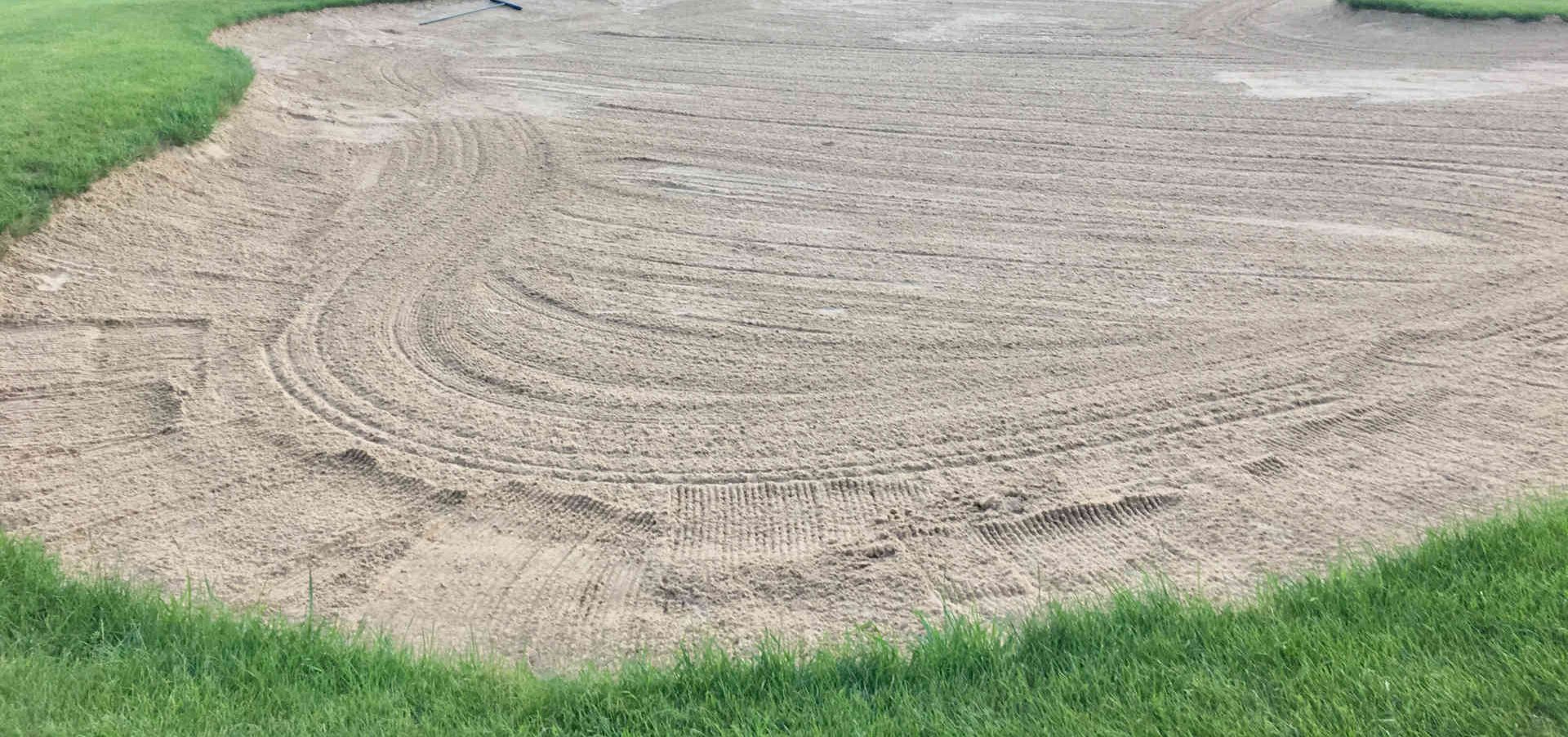
- Superior drainage and versatile bunker material that is easy to maintain.
- Performance driven bunker sand with preferred playability.
- Learn more about Riviera »
Pro/Angle, the original 100% Bunker Sand, not only increases playability, but it also reduces the cost of bunker maintenance. The angular particle technology lends itself to:
- Greater wind resistance
- Superior slope retention
- Excellent drainage
- Greater overall product retention
- Eliminates the need for extra compaction to “firm” up bunker
- Learn more about Pro/Angle »
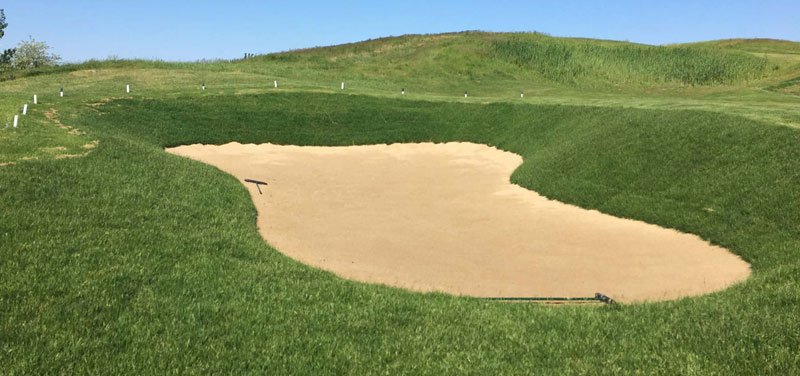
- Natural sand that is darker in color. Reminiscent of Scottish links style courses.
- Offers firm ball support and provides golfers with great green side spin.
- Learn more about Niblick »
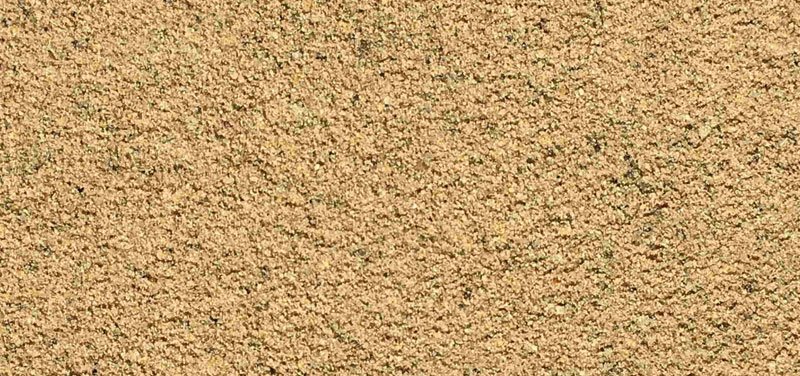
- Natural sand and limestone blended for superior playability and drainage.
- Lighter color offers a desired look for golfers and superintendents. Adheres to bunker faces.
- Learn more about Chesapeake »
- Provides firm ball support. Allows golfers playability from both green side and fairway bunkers.
- Lighter in color and produces a desired contrast in bunker aesthetics.
- Learn more about Best Ball »
Shoreline Delivers
With over 35 years of experience, our team are experts in golf and sports turf aggregates. We are here to ensure your course is in the best shape possible. We can help you select the ideal bunker sand, divot and tee mixture, or solution for your unique course conditions and goals. Contact us today to get started!
